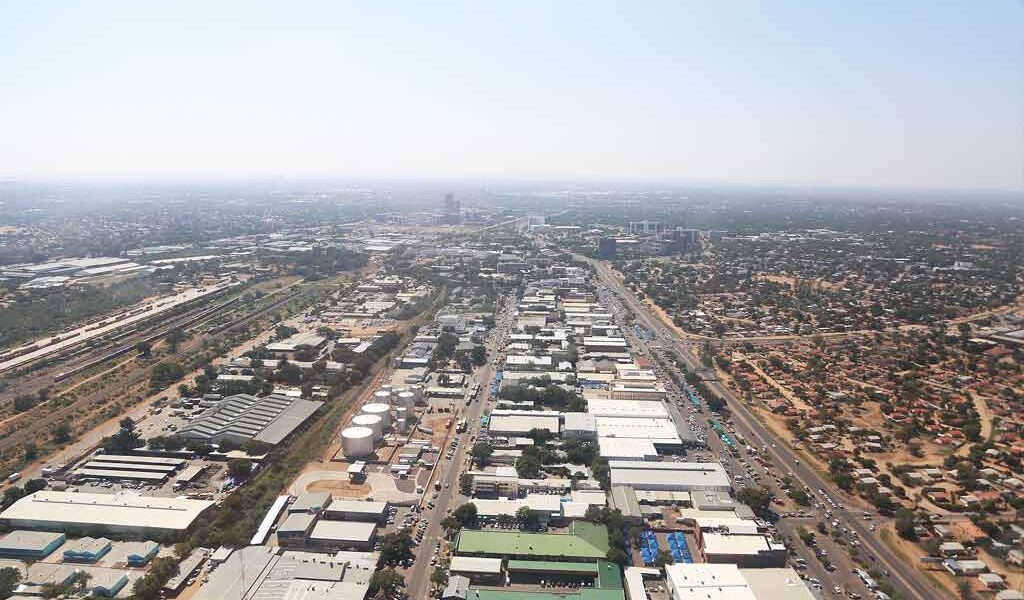Gaborone among cities avoided by global traders
TSHIAMO TABANE
In a new report, the World Bank has revealed that compared to other continents, Sub-Saharan Africa has the least developed cities which are shunned by global companies that can set up large manufacturing industries and create more job opportunities.
Gaborone is said to be among cities avoided by global companies as the majority of businesses in it are small and cannot export to international markets. With around 70 percent of its businesses being small companies that trade locally, Gaborone is ranked the 2nd among cities which are shunned by global manufacturing companies, followed by Dar es Salaam, Kampala, Kigali, Bamako, Accra, Nouakchott, Nairobi, Dakar, Addis Ababa, Lagos, Niger, Mombasa, Lusaka and Harare. Luanda is ranked the 1st among such cities, according to the report.
The bank noted that globally, urbanization strongly correlates with the expansion of manufacturing and for most countries in other continents, manufacturing as a share of Gross Domestic Product (GDP) rises with urban population until about 60 percent of the population lives in cities and manufacturing accounts for about 15 percent of GDP. “Sub-Saharan Africa has not developed in this way: its pattern of growth has been described as urbanization without industrialization.”
The bank stated that cities in Sub-Saharan Africa are not open to global companies which can set up manufacturing industries and export to global markets due to their low development trap, a situation which has resulted in a few job opportunities and poverty. According to the bank rapidly urbanizing Africa has cities which are crowded, and due to low investment, they lack structures needed to make them livable. “Capital investment in Africa over the past 40 years has averaged about 20 percent of GDP. In contrast, China, Japan and Korea stepped up capital investment in their cities, during their periods of rapid urbanization. China’s capital investment in infrastructure; housing and office buildings rose from 35 percent of GDP to 48 percent during urbanization period (1978–2012.) In East Asia, as a whole, capital investment remained above 40 percent of GDP during urbanization period, helping the region to become very dense economically.”
According to the report one reason Africa’s cities perform poorly is that the continent is poorer than other regions were at comparable stages of urbanization. Figures from the report show that when countries in the Middle East and North Africa region became 40 percent urban, their per capita GDP was $1,800 and when countries in the East Asia and Pacific region hit the 40 percent urbanization mark their per capita GDP averaged $3,600 while per capita GDP in urbanizing Sub-Saharan Africa is just $1,000.
Africa’s urban population stands at 472 million people and as cities grow in size another 187 million people will be added to cities by 2025. Africa’s urban population will double over the next 25 years, reaching 1 billion people by 2040 and the World Bank is of the view that when well managed, city growth can spur economic growth and productivity: “First, it can boost incentives for investment through higher economic density and proximity, which support clusters of firms and increase connectivity among workers. Second, it can make cities more livable for poor and middleclass residents, by providing affordable services, amenities, and housing. Africa’s cities share neither of these attributes. They are predominantly local, lacking global or even regional reach. They are unsuccessful because they have developed along a different trajectory — one that imposes heavy costs on residents and firms and locks them in a low-growth poverty trap.”
The report has recommended that supporting rising population densities in African cities will require investments in buildings and complementary physical infrastructure: roads, drainage, street lighting, electricity, water and sewerage together with policing, waste disposal and health care. It warned that in the absence of higher levels of capital investment at around Asian levels, the potential benefits of Africa’s cities could be overwhelmed by crime, disease, and squalor.

